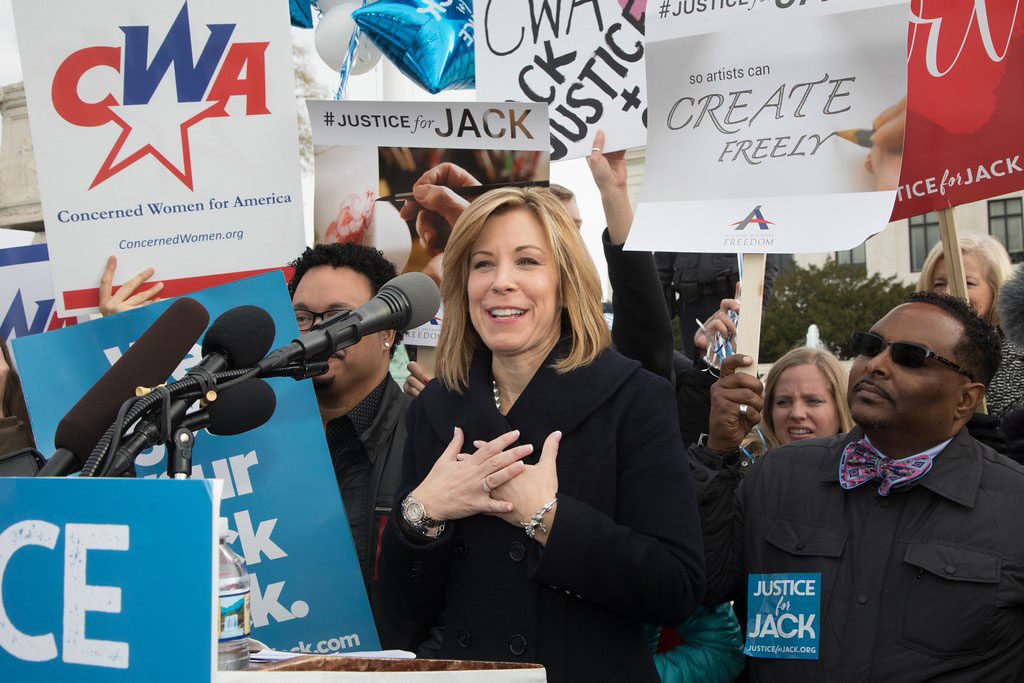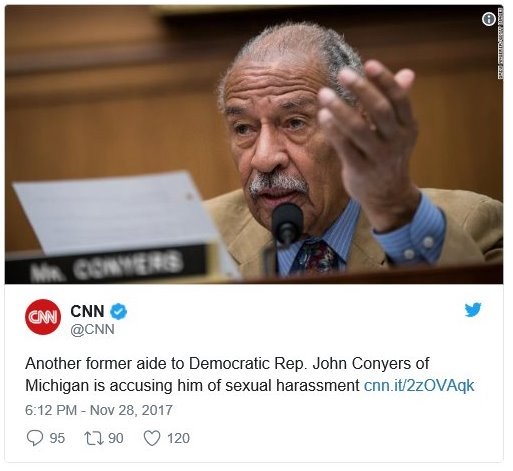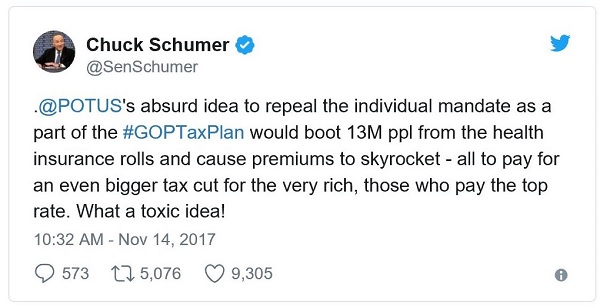VIDEO: Growing Number of Obama DOJ/FBI Anti-Trump Abuses
Judicial Watch Sues FBI for Records About Removal of Alleged Anti-Trump FBI Official From Mueller Team
The FBI and Justice Department are engulfed in a rule of law crisis because of new revelations of evident bias among FBI officials and key DOJ prosecutors. Recently, we exposed how Andrew Weissmann, a top Mueller special counsel deputy has anti-Trump bias. And this week, we’re in the forefront of a related scandal about an anti-Trump bias infecting the top echelons of the FBI.
Just yesterday, we filed a Freedom of Information Act (FOIA) lawsuit against the FBI for records about the removal and reassignment of Peter Strzok, a former deputy to the assistant director for counterintelligence at the FBI, from the special counsel’s investigative team led by former FBI director Robert Mueller. Strzok also was the FBI’s chief of the investigation into Hillary Clinton’s illicit email server, interviewing Hillary Clinton himself on July 2, 2016.
We filed the suit in the United States District Court for the District of Columbia after the FBI failed to respond to an August 17, 2017, FOIA request (Judicial Watch, Inc. v. Federal Bureau of Investigation (No. 1:17-cv-02682)). Judicial Watch seeks:
- All records regarding the assignment of FBI Supervisor Peter Strzok to the special counsel’s investigation led by former Director Robert Mueller.
- All records related to the reassignment of FBI Supervisor Peter Strzok from the special counsel’s investigation to another position within the FBI.
- All SF-50 and/or SF-52 employment forms, as well as all related records of communication between any official, employee, or representative of the FBI and any other individual or entity.
According to reports (here and here) Strzok was reportedly removed from the Mueller investigative team in August and reassigned to a human resources position after it was discovered that he and an FBI lawyer, Lisa Page, who worked for FBI Deputy Director Andrew McCabe and with whom Strzok was allegedly carrying on an extramarital affair, “exchanged text messages during the Clinton investigation and campaign season in which they expressed anti-Trump sentiments and other comments that appeared to favor Clinton.”
Strzok reportedly oversaw the FBI’s interviews of former National Security Adviser General Michael Flynn; changed former FBI Director James Comey’s language about Hillary Clinton’s actions regarding her illicit email server from “grossly negligent” to “extremely careless;” played a lead role in the FBI’s interview of Clinton and is suspected of being responsible for using the unverified dossier to obtain a FISA warrant in order to spy on President Trump’s campaign.
It is disturbing the FBI has stonewalled our request about Mr. Strzok’s demotion for four months. One can only conclude the FBI and Justice Department, including Mr. Mueller’s operation, wanted to hide the truth about how Strzok’s and Page’s political biases and misconduct have compromised both the Clinton email and Russia collusion investigations.
Agent Strzok’s texts about Hillary Clinton and President Trump are responsive to another Judicial Watch FOIA lawsuit but have not yet been produced by the FBI.
We worked the airwaves hard this week to educate Americans on the anti-Trump rule of law crisis. You can view our important Fox hits here and here. We also have been highlighting our battles on OANN here and here.
Obama State Department Cut Deal with Hillary to Keep Call Log, Schedules Secret
It has been clear all along that Hillary Clinton was doing things at the State Department that she doesn’t want anyone to know about. Judicial Watch already exposed her email scandal, but the secrecy went beyond emails.
Judicial Watch just released Obama State Department documents showing former Secretary Hillary Clinton and her then-Deputy Chief of Staff Huma Abedin were permitted to remove electronic and physical records under a claim they were “personal” materials and “unclassified, non-record materials,” including files of Clinton’s calls and schedules, which were not to be made public. Outrageously, the documents show the Obama State Department records would not be “released to the general public under FOIA.”
Curiously, the new records also show that Huma Abedin was allowed to take five boxes of “physical files” out of the State Department that include records described as “Muslim Engagement Documents.” (We recently found how Abedin’s controversial Islamist activis
We found the info about the secret Clinton-State Department deal thanks to our two-year-old Freedom of Information Act (FOIA) request for:
Any and all DS-1904 (Authorization for the Removal of Personal Papers and Non-Record Materials) forms completed by, or on behalf of, any of the following individuals:
- Former Secretary Hillary Clinton
- Former Chief of Staff Cheryl Mills
- Former Deputy Chief of Staff Huma Abedin
- Former Deputy Chief of Staff Jacob Sullivan
The documents include a list of official and personal calls and schedules that Clinton removed, which carry a special notation that the documents were not to be made public records. The notation is on an addendum to a DS-1904 signed by Clarence N. Finney Jr., then-director of the Office of Correspondence and Records, who was the reviewing officer:
NOTE: The Secretary’s call log, grid and schedules are not classified, however, they would not be released to the general public under FOIA. They are being released to the Secretary with this understanding. [Emphasis in original]
- Electronic copy of “daily files” – which are word versions of public documents and non-records: speeches/press statements/photos from the website, a non-record copy of the schedule, a non record copy of the call log, press clips, and agenda of daily activities
- Electronic copy of a log of calls the Secretary made since 2004, it is a non-record, since her official calls are logged elsewhere (official schedule and official call log)
- Electronic copy of the Secretary’s “call grid” which is a running list of calls she wants to make (both personal and official)
- 16 boxes: Personal Schedules (1993 thru 2008-prior to the Secretary’s tenure at the Department of State.
- 29 boxes: Miscellaneous Public Schedules during her tenure as FLOTUS and Senator-prior to the Secretary’s tenure at the Department of State
- 1 box: Personal Reimbursable receipts (6/25/2009 thru 1/14/2013)
- 1 box: Personal Photos
- 1 box: Personal schedule (2009-2013)
(JW has a pending request for the deposition of Finney in separate litigation concerning Clinton emails and the Benghazi terrorist attack.)
The originals of some Clinton documents were retained, such as the call logs and schedules. For other records, including material that predates Clinton’s tenure, there is no indication that a copy was made. The most significant of these are her personal correspondence and gift binders, which could reflect Clinton Foundation and Clinton Global Initiative ties.
Through our previous investigations we made public numerous examples of Clinton’s schedule being broadcast via email through her unsecure, non-government server (for example, see here, here, hereand here).
The records also contain a list of materials removed by Clinton accumulated by Robert Russo, Clinton’s then-special assistant, including PDFs of Clinton’s “correspondence in response to gifts … thank you and acknowledgements,” as well as other records.
The documents indicate that Clinton removed a physical file of “the log of the Secretary’s gifts with pictures of gifts.”
The receipt of gifts by federal employees in the Executive Branch is regulated:
A “prohibited source” [of gifts] under the regulations is one who seeks official action from the employee’s agency; one who does business or seeks to do business with the agency; one whose activities are regulated by the employee’s agency; one whose interests may be substantially affected by the performance or nonperformance of the employee’s official duties; or an organization a majority of whose members fit any of the above categories.
A gift is given “because of” the employee’s official position if it would not have been offered “had the employee not held the status, authority or duties associated with his Federal position.” Gifts that are “motivated by a family relationship or personal friendship” may therefore be accepted without limitation.
We already know the Obama State Department let Hillary Clinton steal and then delete her government emails, which included classified information. But these new records show that was only part of the scandal. They show that the Obama State Department had a deal with Hillary Clinton to hide her call logs and schedules, which would be contrary to FOIA and other laws. When are the American people going to get an honest investigation of the Clinton crimes?
Judicial Watch Sues California and Los Angeles Over Dirty Voter Registration Rolls
Judicial Watch is the nation’s leader in the legal effort to ensure the integrity of our elections.
To that end, we took a big step forward with the filing of a federal lawsuit against Los Angeles County and the State of California over their failure to clean their voter rolls and to produce election-related records as required by the federal National Voter Registration Act (NVRA) (Judicial Watch, Inc.et al. v. Dean C. Logan, et al. (No. 2:17-cv-08948)).
We filed in the United States District Court for the Central District of California’s Western Division on behalf of Judicial Watch, Election Integrity Project California Inc., and Wolfgang Kupka, Rhue Guyant, Jerry Griffin, and Delores M. Mars, who are lawfully registered voters in Los Angeles County.
We argue that the State of California and a number of its counties, including the county of Los Angeles, have registration rates exceeding 100%:
Eleven of California’s 58 counties have registration rates exceeding 100% of the age-eligible citizenry.
Los Angeles County has more voter registrations on its voter rolls than it has citizens who are old enough to register. Specifically, according to data provided to and published by the U.S. Election Assistance Commission, Los Angeles County has a registration rate of 112% of its adult citizen population.
The entire State of California has a registration rate of about 101% of its age-eligible citizenry.
We point out that this is due in part to the high numbers of inactive registrations that are still carried on California’s voter rolls:
About 21% of California’s voter registrations, or more than one in five, are designated as inactive.
California has the highest rate of inactive registrations of any state in the country…. Los Angeles County has the highest number of inactive registrations of any single county in the country.
Although these inactive registrations should be removed after a statutory waiting period consisting of two general federal elections, California officials are simply refusing to do so.
We explain that, even though a registration is officially designated as “inactive,” it may still be voted on election day and is still on the official voter registration list. The inactive registrations of voters who have moved to a different state “are particularly vulnerable to fraudulent abuse by a third party” because the voter who has moved “is unlikely to monitor the use of or communications concerning an old registration.” Inactive registrations “are also inherently vulnerable to abuse by voters who plan to fraudulently double-vote in two different jurisdictions on the same election day.”
We sent a written request for public records on November 16, 2017, and another on November 29, 2017, seeking information about “the number of inactive registrations on the voter rolls in Los Angeles County,” but we were told each time that there were no responsive records.
Last summer, we sent a broader request for voter roll records that Los Angeles County and the State of California are required by the NVRA to keep and to make publicly available. Nothing was produced in response to this request. We point out that it is impossible to believe that there were no responsive records:
Los Angeles County, with over five million active voters and massive list maintenance responsibilities, and the Secretary of State of California [must] have exchanged emails responsive to [Judicial Watch’s] request for “all email or other communications between the Secretary’s Office and all California County voter registration officials concerning . . . [i]nstructions to the counties concerning their general list maintenance practices and obligations” and “[n]otices to the counties concerning any failure to comply with their voter list maintenance obligations.” Such emails should have been produced.
Federal law is clear. Section 8(a)(4) of the NVRA requires states to implement a program to remove ineligible registrants; and to turn over relevant records and information. We argue:
Los Angeles County is failing to properly conduct the list maintenance required by the NVRA by failing to properly train employees, failing to require and enter registrants’ birthdates, and failing to timely process reports that registrants have died, have committed disqualifying felonies, are mentally incompetent, or have registered twice.
Our lawsuit asks the court to enjoin Los Angeles County and the state of California from further violating the NRVA and to compel them to “develop and implement a general program that makes a reasonable effort to remove from Los Angeles County’s rolls the registrations of ineligible registrants.” We also want to inspect and copy the requested voter roll records.
We sent a notice-of-violation letter in August 2017 threatening to sue California and certain of its counties over their violations of the NVRA. California was one of 12 states to receive such letters from Judicial Watch.
Bottom line is that California may have the dirtiest election rolls in the country. Federal law requires states to take reasonable steps to clean up their voting rolls. Dirty voting rolls can mean dirty elections. This lawsuit aims to ensure that citizens of California can have more confidence that their elections are fair and honest.
Judicial Watch Senior Attorney and Director of its Election Integrity Project Robert Popper recently provided testimony to the Presidential Advisory Commission on Election Integrity concerning the NVRA. Popper was formerly Deputy Chief of the Voting Section of the Civil Rights Division of the Justice Department.
We sent notice-of-violation letters threatening to sue 11 other states having counties in which the number of registered voters exceeds the number of voting-age citizens, as calculated by the U.S. Census Bureau’s 2011-2015 American Community Survey: Alabama, Florida, Georgia, Illinois, Iowa, Kentucky, Maryland, New Jersey, New York, North Carolina and Tennessee. Judicial Watch informed the states that should they fail to take action to correct violations of Section 8 of the NVRA, it would file suit.
We previously filed successful lawsuits under the NVRA against Ohio and Indiana that resulted in those states taking several actions to clean up their voting rolls. We are currently suing Kentucky over its failure to remove ineligible voters as required by the NVRA, and we are suing the State of Maryland and Montgomery County over their failure to release voting-related records.
We are being assisted by Charles H. Bell Jr., of Bell, McAndrews & Hiltachk, LLP; and H. Christopher Coates of Law Office of H. Christopher Coates.
Judicial Watch Asks Supreme Court to Restrain FCC Ability to Impose Government Control Over the Internet Through “Net Neutrality”
President Obama and his minions spent eight years illicitly drawing as much power as they could to Washington D.C., and we’re doing our part to rectify that.
We have joined the Allied Educational Foundation (AEF) in submitting an amici curiae brief to the U.S. Supreme Court, urging the court to hear the appeal of the 2015 case regarding an Obama-era FCC decision that reclassified broadband Internet as a public utility so that it could impose its restrictive net neutrality rules (United States Telecom Association, et al. v. Federal Communications Commission and United States of America (No. 15-1063)).
We argue that the circuit court’s decision “undermined the constitutional separation of powers” by allowing the FCC to directly intervene in the broadband Internet economy.
Our amici brief also argues that the lower court’s ruling will expose the FCC to undue influence from politicians and lobbyists now and in the future:
The U.S. Court of Appeals for the D.C. Circuit gave an administrative agency like the Federal Communications Commission extended future powers to destroy enormous amounts of national wealth by reclassifying and regulating broadband Internet service… The result will be constant risk of damage to a major portion of the American economy and a simultaneous increase in wasteful rent-seeking behavior and agency lobbying. Amici are additionally concerned that unless this Court acts to rein in an unchecked administrative state, federal separation of powers doctrine will be badly undermined.
Additionally, we and AEF argue that the D.C. Circuit’s decision “is blessing Congress’ evasion of its constitutional responsibility to make laws. This will lead the executive branch to continue to usurp this authority with bolder and more inventive interpretations of decades-old statutes until eventually all real lawmaking power will lie in the executive and the judiciary.”
In May 2017, we filed a Freedom of Information Act (FOIA) lawsuit against the FCC seeking records of the Obama White House’s influence in the FCC’s decision to reclassify broadband Internet as a public utility so that it could impose its restrictive net neutrality regulatory rules (Judicial Watch v. Federal Communications Commission (No. 1:17-cv-00933)).
On May 18, 2017, the FCC voted to propose a new review of the Obama-era net neutrality regulations passed in 2015 on Internet service, which greatly increased the FCC’s management of Internet content delivery and operations. In July, we and AEF submitted comments to the FCC:
[T]he prior FCC was not content to merely protect Internet openness. Rather than adopt simple rules toward that end, the prior FCC adopted a raft of economic regulations that serve little purpose other than to bring a thriving and successful industry to heel, placing it under the control of federal regulators. This was a simple power grab, taking decision-making authority away from entrepreneurial businesses and putting it in the hands of the FCC.
Judicial Watch/AEF also highlighted the political motivation behind the Obama FCC “power grab” that produced this “politically corrupted decision” to regulate the Internet:
The prior FCC’s adoption of the net neutrality regulations was a politically corrupted decision, which will do far more to increase the wealth of Washington DC power-brokers and lobbyists than it will to protect consumers… These net neutrality rules are a far-left, base-appeasing federal power grab. The regulations as written are certain to increase the amount of rent-seeking behavior already present in a usually smoothly functioning industry. As industry players position themselves to curry favor with federal bureaucrats possessed of far-reaching adjudicatory powers, Internet innovation, investment and consumers all will suffer.
The Judicial Watch/AEF comments were quoted twice in the FCC’s recent order:
Should the hypothetical harms that proponents of Title II imagine eventually come to pass, application of the antitrust laws would address those harms. fn. 517 … Judicial Watch Comments at 12 (asserting that “most of the potential or imagined future violations of net neutrality principles are already illegal under antitrust laws, including acts like website blocking, charging monopoly rents, collusion between industry players, and unfair competition. The existing antitrust laws can already be enforced against broadband providers by the Justice Department, the Federal Trade Commission, and the 50 State Attorneys General.”)
And to the extent an ISP has market power, antitrust law would only allow such ISPs to engage in pro-competitive paid prioritization practices. fn. 910 Judicial Watch Comments at 9-10 (“Allowing a two-sided market to flourish is more effective than regulation for keeping consumer prices low even in true monopoly provider cases, which broadband Internet is likely not, given the ubiquity of wireless broadband.”)
The Obama FCC’s attempted takeover of the Internet under the fake guise of “net neutrality,” which was blessed by the D.C. Court of Appeals, must be stopped and not allowed to serve as a precedent for further expansion of unconstitutional actions by the federal bureaucracy.
The Trump-controlled FCC just voted this week to undo Obama’s Internet takeover. But this court battle could determine whether a future administration could come back with another government power grab of our Internet freedoms.
RELATED ARTICLES:
Did the FBI Conspire to Stop Trump?
Report: How Fusion GPS and the Obama Administration Weaponized the Trump Dossier


























 In a university, this can result in the needs and requests of students becoming an annoyance, even though the institution exists to serve them. And it can cause resistance to rededication to the mission of the institution when that mission has not been the animating principle for years. Such institutions are like the driver who, upon being told by his passenger consulting a map that they are going the wrong direction, responds: “Shut up, we’re making great time.” Too often, bureaucratic processes, created to serve an end, become the end to be served, and the tail begins to wag the dog.
In a university, this can result in the needs and requests of students becoming an annoyance, even though the institution exists to serve them. And it can cause resistance to rededication to the mission of the institution when that mission has not been the animating principle for years. Such institutions are like the driver who, upon being told by his passenger consulting a map that they are going the wrong direction, responds: “Shut up, we’re making great time.” Too often, bureaucratic processes, created to serve an end, become the end to be served, and the tail begins to wag the dog.



